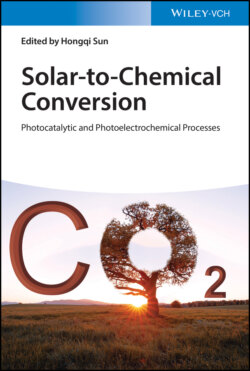Читать книгу Solar-to-Chemical Conversion - Группа авторов - Страница 15
2.2.2 Artificial Photosynthesis
ОглавлениеScientists around the world have been trying to replicate the natural reactions that occur during photosynthesis and have come across the science of artificial photosynthesis. The term artificial photosynthesis is used to refer to any mechanism made to capture light and store energy from the sun in chemical bonds of a solar fuel [8]. In general, as shown in Figure 2.2, the artificial photosynthesis includes three main steps: (i) The first step in artificial photosynthesis is for the reactants coming together. The reactants include sunlight along with water and carbon dioxide that is available in the atmosphere. (ii) These reactants then go through the whole process of photosynthesis artificially. Scientists have been known to use artificial leaves to split water, producing both oxygen and hydrogen. They are now creating artificial leaves using ruthenium and manganese complexes to mimic the natural process of photosynthesis (redox reaction of nicotinamide adenine dinucleotide phosphate (NADPH/NADP+)). (iii) The products of the reactions are created as soon as water is split, producing both oxygen and hydrogen. The hydrogen is then either used directly as a fuel or a reductant for carbon dioxide to produce organic fuels [10].
Figure 2.2 Schematic diagrams of (a) natural photosynthesis and (b) artificial photosynthesis based on molecular systems.
Source: Liu et al. [9].
